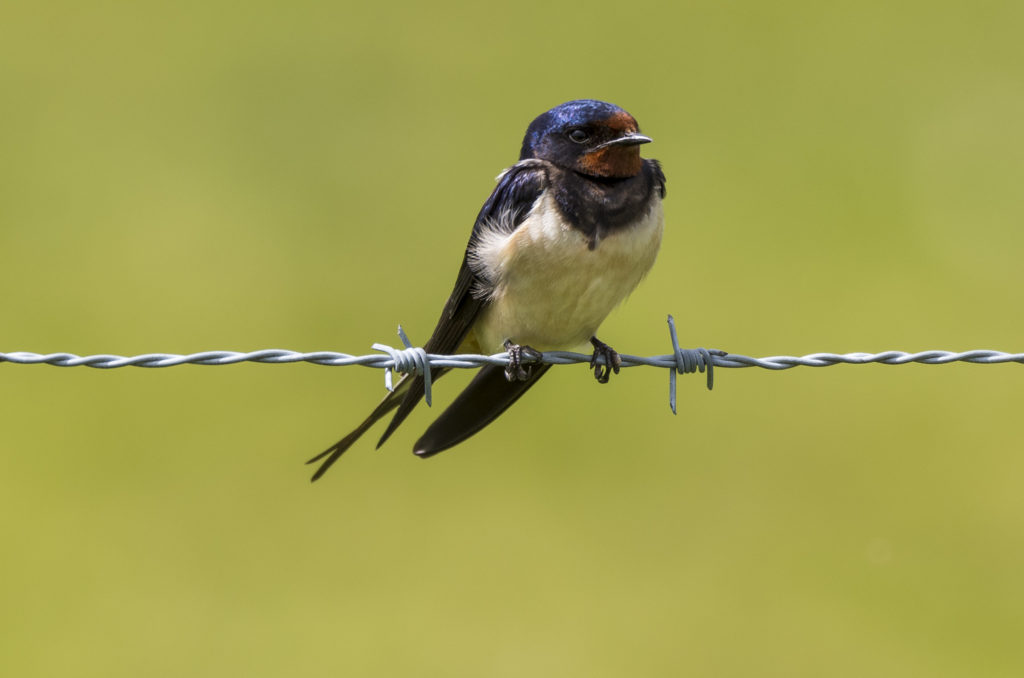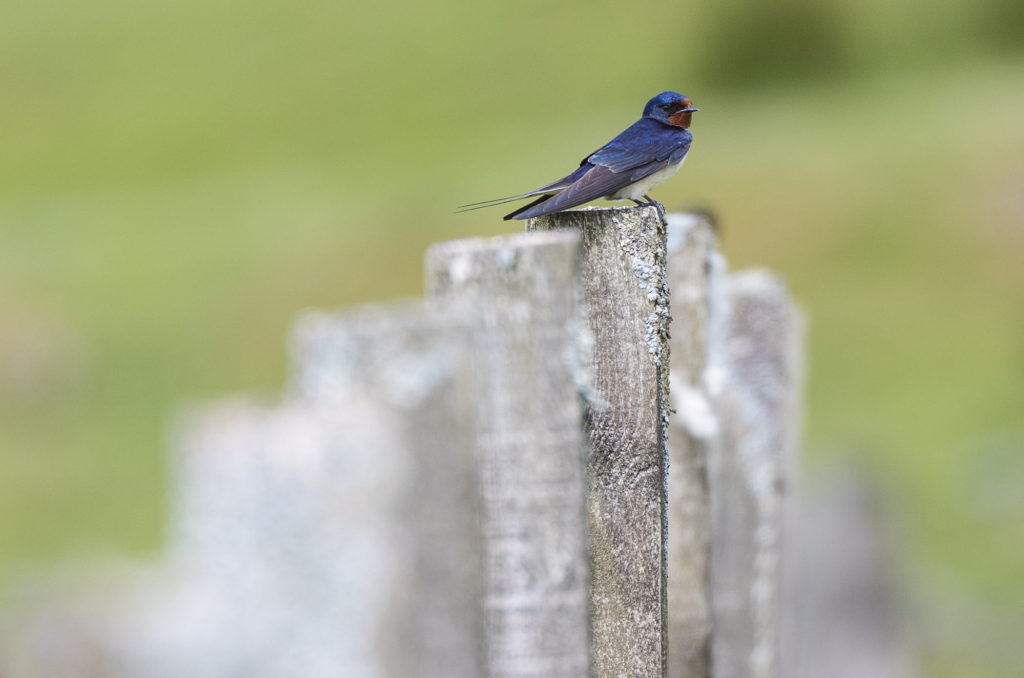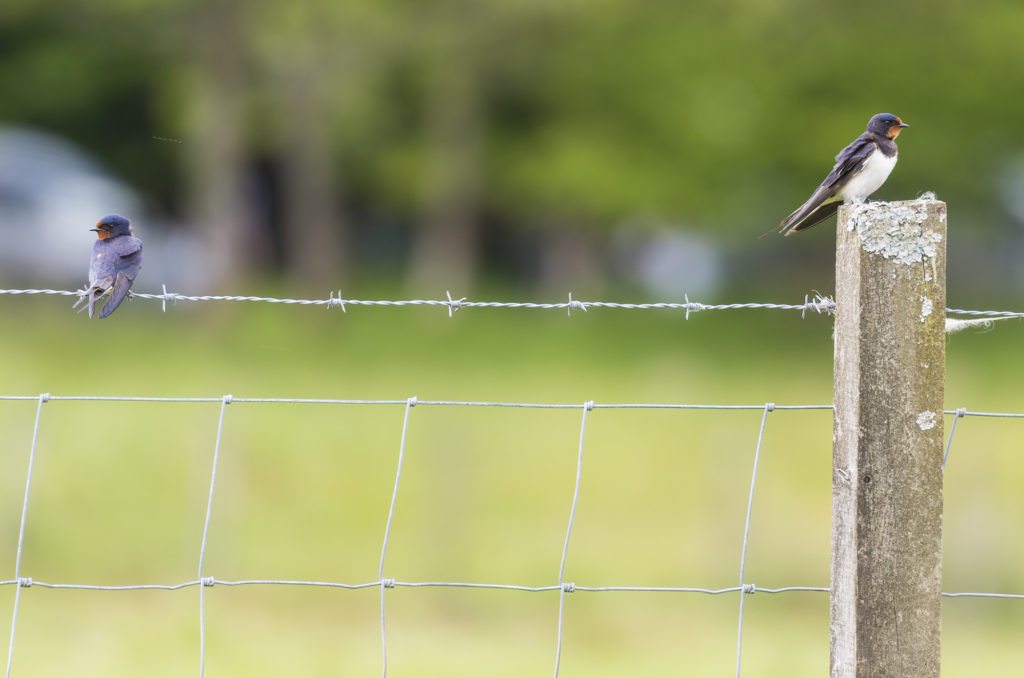I photographed these barn swallows a couple of weeks ago. I was happy to see plenty of swallows flying around the gunsite at Mugdock Park. The birds seemed to be using the gun placements, which formed part of the Clyde Basin anti-aircraft defence during the Second World War, as a base to hunt from and were performing all kinds of aerial acrobatics. Occasionally they would settle on the barbed wire fence surrounding the gunsite, providing the ideal opportunity to capture portraits. Unfortunately, I missed the opportunity to photograph the pair mating, as I was too far away, but I took my time and managed to get close enough to get a few decent shots of them perched apart…maybe they were both too tired to fly off?!
I believe the image below to be of the male based on the fact that a few minutes before this was taken he was flapping about on the back of the other bird! Swallows are easily distinguished from similar species, like house martins and sand martins, due to their deeply forked tails. Their tails help them to manoeuvre at speed while pursuing their insect prey, but they can also be a signal of quality in the males. Those males who can grow the longest and most symmetrical streamers are likely to be preferred by the females.

After capturing some portraits of the two birds I was photographing, the bird on the barbed wire flew off and left this bird (which I think is the female) sitting on the fence post. Both birds had been comfortable with me photographing them from a short distance and I was able to move closer to the fence to capture this image. The aim was to use the fence as a lead-in line to draw the eye to the bird and I think having the fence out of focus in both the foreground and background adds to the image. I also like that the stunning blue and rust-coloured of the swallow complements the green background and contrasts with the muted tones of the fence posts.

Most swallows have started breeding by early June with the first brood usually having left the nest by July. Swallows will often go on to raise a second, and sometimes third, brood. One study showed that 44% of pairs will reoccupy the same nest and most pairs will return to the same colony. This is a phenomenon known as philopatry. It takes a lot of effort and energy to build a swallow nest. It can require an average of 1,300 trips to gather enough mud to create the nest cup and adult swallows will have used up much of their energy reserves on their epic migration from Africa. So, it makes sense not to have to start afresh each time. Research shows that a good nest can be reused for 10 to 15 years by swallow pairs.
There have been reports that the number of swallows returning to British skies has been much lower than normal this year. One theory is that this depletion was caused by a freak storm back in April that killed thousands of the migrating birds in Greece. After high winds battered the country, dead swallows were found in Athens and on Aegean islands. The Wildlife Trusts have also noted that all migratory birds are suffering long-term declines with climate change being one of the issues they are having to contend with. It has also been harder for precise numbers to be gathered this year as we were in lockdown when these birds were starting to arrive in the UK. I hope that numbers pick up next year and I hope to see more of these stunning birds before they leave our skies as autumn approaches.
Summer isn’t my favourite season, but I do love that it brings these beautiful and amazing birds to the UK.


